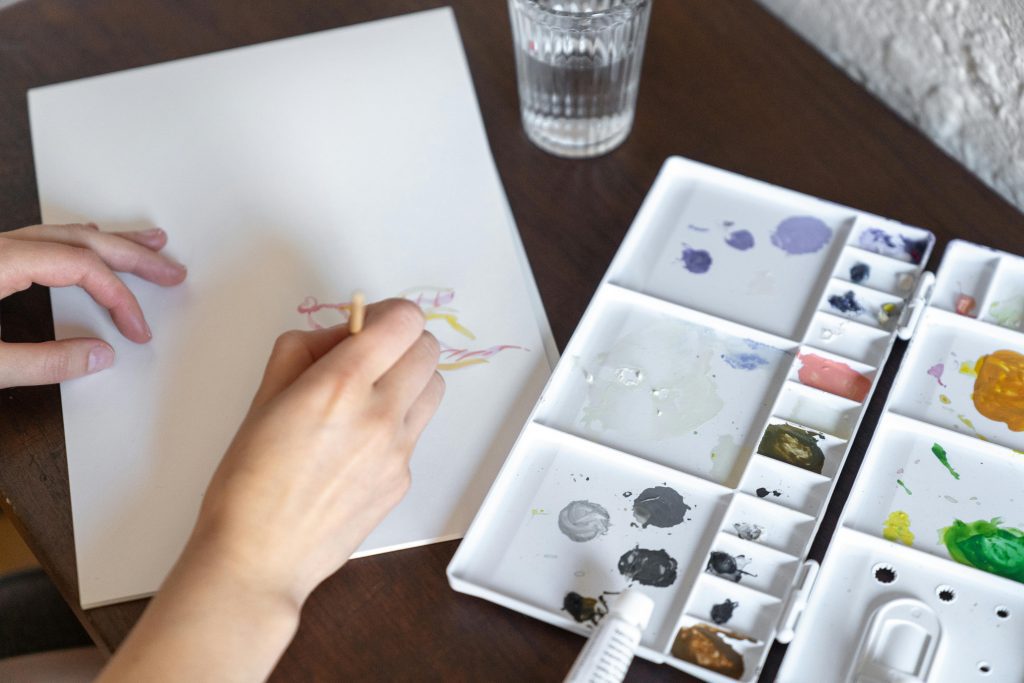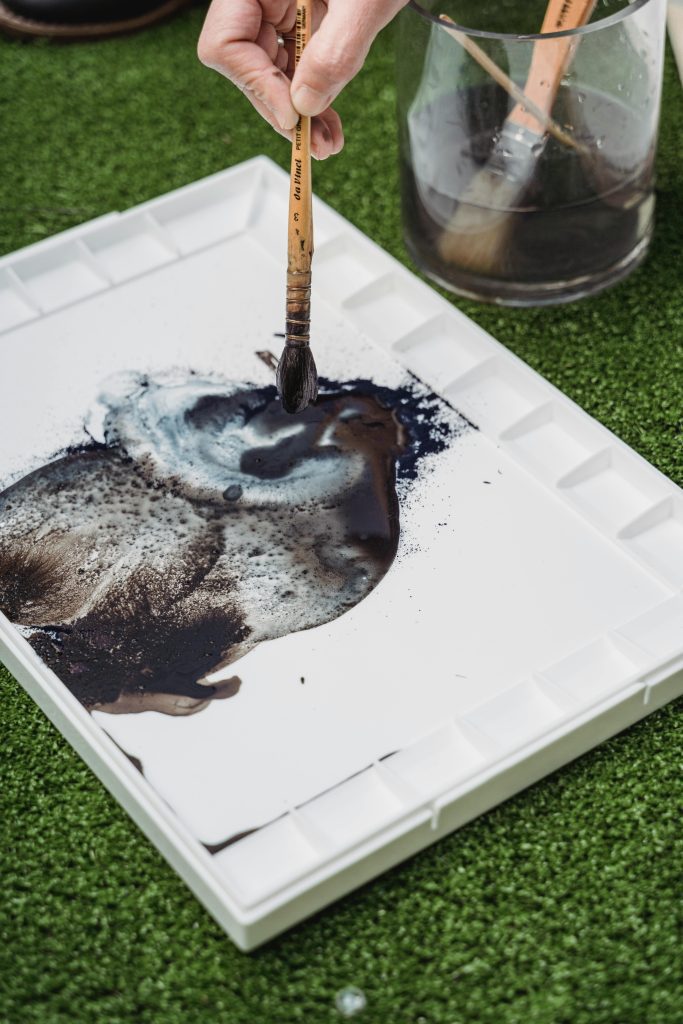A Step-by-Step Guide to Improve Your Existing Art Portfolio

Let’s Take a Look Together
You’ve got a portfolio, maybe on your website, maybe tucked in a PDF, maybe in a beautifully curated Instagram grid. But when was the last time you gave it a real, honest look? Not a scroll-through. A review.
Your portfolio is more than a gallery. It’s a mirror of your growth, your taste, and the version of your creative self you’re presenting to the world. Whether you’re trying to land clients, get into galleries, or just want to feel more aligned with your work, learning to analyze your portfolio is the first step to improving it.
This article is here to walk you through exactly how to do that. No stuffy critiques or scary jargon. We’ll explore what to keep, what to tweak, and how to refresh your portfolio so it represents who you are now, not who you were two years ago.
Are You Leading With Your Best Work?
This is the easiest place to start, but also the one most artists skip. Scroll through your portfolio. What’s the very first piece someone sees? Is it your strongest? Or is it just the most recent thing you finished?
Your first impression should be your boldest, most confident work. Think of it like a firm handshake. This is the moment where someone decides whether to keep exploring or click away. And in the art world, attention spans are short.
If your most recent piece doesn’t reflect your current skills or voice, that’s okay. You don’t have to lead with it. Instead, curate intentionally. Pick a piece that makes you feel proud, excited, and seen. That should go first.
Sometimes we’re too emotionally attached to old pieces, and that clouds our judgment. A helpful tip? Ask a fellow artist or trusted friend to scroll your portfolio and name the top three pieces that stand out. You’ll be surprised what they pick.
Reordering alone can completely transform the impact of your portfolio. You don’t even have to add anything new. Just make sure you’re putting your strongest foot forward from the very beginning.
For example, A viewer lands on a portfolio and the first piece is a loose sketch, strong concept, but clearly not the artist’s best. They scroll once, hesitate, and exit before seeing the real gems further down
What Is Your Portfolio Saying About You?
Your portfolio isn’t just about pretty pictures. It’s a conversation. Every image, every layout choice, every written caption is telling the viewer something. The question is, what is it saying?
If you laid out your entire portfolio in front of you, what themes would emerge? Are you a bold color lover? A storyteller? A minimal realist? A wild experimentalist? Look for patterns. Because patterns help people understand your artistic identity.
Clarity is magnetic. If someone looks through your portfolio and gets a clear sense of who you are as a creator, they’re more likely to connect with your work. But if it feels all over the place, they might feel unsure or confused, even if the work itself is beautiful.
That doesn’t mean you can’t have variety. But even in a diverse portfolio, there should be a thread, a visual language, a mood, a story, or a consistent technique that makes it you. Otherwise, you risk looking like a collector of styles, not a focused artist.
Here’s an exercise: write down three words you want people to associate with your work. Now scroll through your portfolio again. Do those three words show up in the visuals? The layout? The vibe?
If not, it might be time to realign how you’re showing up visually and verbally.

Is the Work Outdated or Still Relevant?
It’s tempting to keep every piece you’ve ever loved in your portfolio. After all, they’re part of your journey, right? But here’s the hard truth: not all of your older work still serves your current goals or voice. And sometimes, it’s better to archive than display.
Take a look at your oldest pieces. Do they still represent your current skill level? Your current style? Your current audience or market? If not, it’s okay to gently retire them.
Outdated doesn’t mean “bad.” It just means “from another version of you.” And the whole point of a portfolio is to introduce people to the current you, the artist you are right now.
If you’re emotionally attached, create a private “legacy archive” folder. That way, you’re not deleting your history, just moving it into a space where it won’t clutter your message.
On the flip side, some old pieces do still hold up beautifully. They might be timeless or foundational to your style. If they still make you say “yes, this is me,” then keep them. But let that be the filter.
Are You Showing Range and Consistency?
Here’s the balancing act: your portfolio should show what you can do (range), but also what you choose to do (consistency). Too much of one without the other can make your portfolio feel flat, or confusing.
Let’s break that down. Range means demonstrating that you have multiple skills or approaches. For example, if you’re a painter, show that you can work with both abstracts and realism, if that’s part of your practice. If you’re a digital artist, include different types of commissions, styles, or purposes.
But here’s the trap: if your portfolio looks like ten different people made it, clients or curators won’t know what to expect. That’s where consistency comes in. It’s about building trust. A recognizable voice. A cohesive feel.
You can create cohesion through color palette, medium, subject matter, composition style, or even the tone of your titles. Find the thread that ties your work together, even across different projects.
One artist I know works in both illustration and textile. But her portfolio flows beautifully because everything is united by her bold, expressive line work. That’s her anchor.
So ask yourself: does my portfolio feel like a unified expression of me, even when it shows different sides of my work?
Are Your Descriptions Helping or Hurting?
Let’s talk about your words. Yes, the art speaks for itself, but your descriptions, titles, and statements are the bridge between your work and the viewer’s understanding. A great piece with a vague or awkward description can miss its full impact.
Start with your titles. Are they adding context? Emotion? A sense of story? Or are they all just “Untitled #3”? Titles don’t have to be poetic, but they should serve your art. Think of them as hints, not spoilers.
Now your captions or descriptions. Are they clear? Warm? Easy to read? Do they give just enough insight without turning into an essay? Think about tone. Speak to your audience like you would to a fellow artist friend, not like a museum tour guide.
If you include a bio or artist statement, make sure it matches your current work and tone. Update any references to old projects or styles. And don’t be afraid to infuse personality. You’re not a robot. Let your voice shine through.
Not sure what to write? The “Artist Statement Guide” from the Arts to Hearts Shop has thoughtful prompts that make rewriting your bio or captions feel way less scary. Super helpful when you want to sound polished but still like you.
Words are power tools. Use them to help people fall in love with your work but don’t over do it.When a viewer has to scroll past three paragraphs of text just to see the first piece, attention drops fast. The brain craves visuals first, words second
Does the Layout Do Your Work Justice?
You could have the most stunning work in the world, but if it’s hard to view, clunky to navigate, or presented awkwardly, people will click away. Layout matters more than we think, and your portfolio should make your art easy to engage with.
Start by checking for clarity. Are your images crisp and high resolution? Do they load fast? Are they cropped properly? Zoom in, is the lighting helping or hurting the work? Your pieces deserve to be seen at their best.
Putting your newest or strongest work halfway down the page means it may never be seen. First impressions form fast, and what’s up top sets the tone for everything that follows
Next, check navigation. Can someone get from piece to piece intuitively? Can they tell the difference between categories? Are you making them scroll endlessly to find your strongest pieces, or are they showcased right away?
Use white space generously. Give your pieces room to breathe. Cramming images together creates visual noise. You want a clean, calm experience so the work can really shine.
If you’re building your portfolio yourself, platforms like Adobe Portfolio, Cargo, and Format are artist-friendly and allow for beautiful minimalist layouts. Women In Arts Network is a great place to start too.
Your art already does the hard work. Let the layout be the elegant frame around it.
Are You Speaking to the Right People?
A lot of portfolio issues come from trying to speak to everyone. But your art isn’t for everyone. And that’s a good thing. The more you know who your portfolio is for, the better you can tailor your presentation.
Think about your goals. Are you trying to get gallery representation? Sell originals? Book freelance design work? Each of those requires a different approach. Your portfolio should reflect the kind of opportunities you’re looking for.
For example, if you’re applying to residencies or grants, you’ll want a clean, focused body of work and a clear artist statement. If you’re selling prints, your portfolio should be vibrant, shoppable, and show your work in real spaces.
You can even create different portfolio versions. One PDF for applications, one website for clients, one Instagram curation for collectors. That’s not overkill. That’s strategy.
Once you know who your portfolio is for, you stop guessing. You start crafting. And that’s when it clicks.
Remember, your dream audience is out there. But they need to recognize themselves in your presentation.

Are You Making It Easy to Connect?
You’ve impressed them with your art. They want to reach out. Don’t make them hunt for your email like it’s a hidden treasure. The best portfolios end with clear, welcoming calls to action.
Make sure your contact info is easy to find, and up to date. Include a contact form, direct email, and links to your socials. Bonus if you add a line like “I’d love to hear from you” or “Let’s collaborate.” A little warmth goes a long way.
If you’re open to commissions, say so. If you’re not, clarify that too. Boundaries are professional. Clarity = kindness.
Add testimonials or client quotes if you’ve worked with others before. A simple sentence like “Working with ___ was a dream!” can build instant trust.
A Quick Test: Would You Hire You?
Here’s a gut check. Imagine you’re your dream client, gallery owner, or curator. You stumble onto your own portfolio. Would you be impressed? Would you stay? Would you reach out?
Or would you feel unsure, confused, or underwhelmed?
Try viewing your portfolio through that lens. Click around. Scroll from start to finish. Read the copy out loud. Does it feel like someone you’d want to work with? Does it feel like someone who takes their art seriously, but still feels human and approachable?
If not, that’s okay. That just means it’s time for a glow-up. No shame, just growth.
Sometimes the biggest changes come from seeing ourselves the way others do.
Your Portfolio Is a Living Thing
Here’s your permission slip: your portfolio doesn’t have to be perfect. It just has to evolve. Like you.
It’s not a museum. It’s a living document. You can change it. Update it. Prune it. Rebuild it. Again and again. In fact, that’s what the best artists do. They treat their portfolios like gardens, constantly nurturing, weeding, and replanting.
So don’t wait for a “perfect” moment to improve it. Start now, one small tweak at a time.
Your art deserves to be seen in its best light. And your future opportunities? They’re waiting on the other side of this update.
